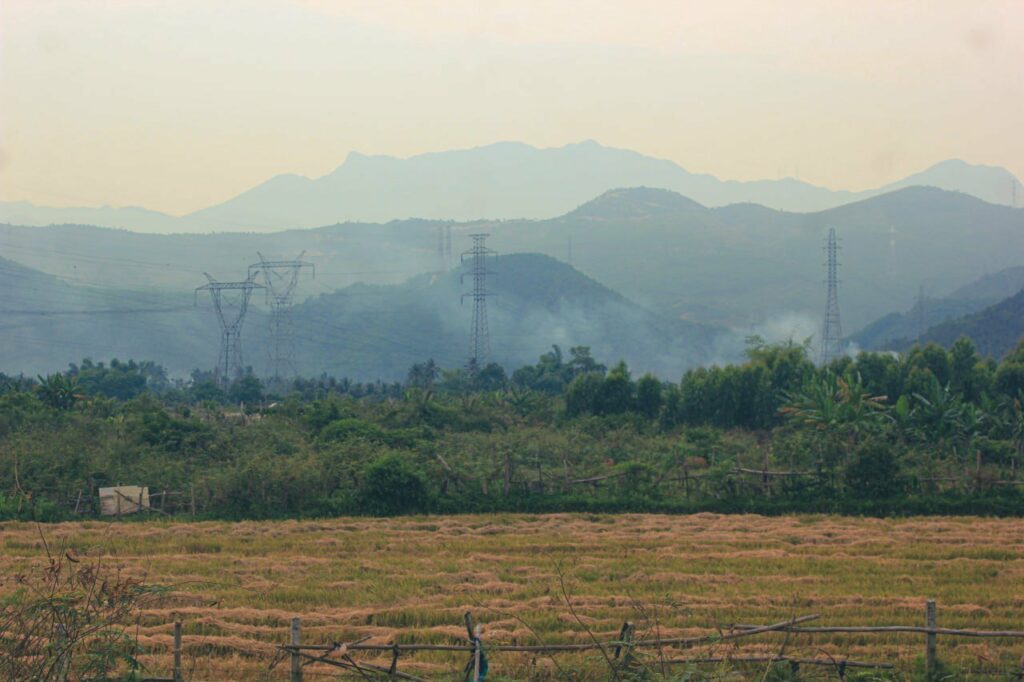Around April, people start harvesting the winter-spring rice crop. The once lush green fields have now turned golden yellow with heavy rice stalks, soon to be harvested, leaving straw and stubble all over the place.

This season is often called the “Smoking Season” by locals, as smoke can be seen rising from the fields wherever. The smoke drift lazily over the river, through the branches of trees and blades of grass, creating an illusionary scene.
When asked about the reason for burning the fields, people reply that burning the fields helps to clean up the straw and stubble that covers the fields, making it easier to plow and harrow for the new crop. It also helps to destroy pests from the previous season so that there are fewer diseases in the next season. Burning the fields has become something of a “tradition” for the people of the countryside, and it is also a memory deeply embedded in the minds of those who live far away, so that when they recall it, the image of the hazy smoke and the scent of fragrant straw lingers on.

Walking barefoot on the straw-covered ground, taking a deep breath, one can feel the “smell of the countryside”. The smell of smoke is not just the smell of plants and the earth, but also the smell of sweat falling on the endless fields, the smell of the hard work of the farmers in the midday sun. Taking another deep breath, you can see again the faces of that year, smeared with dirt, gathering together to pull up each stubble, shake off the dirt, and then huddle together to roast corn and sweet potatoes in the late afternoon.
When the straw and stubble have turned to black ash across the fields, the people will plow and harrow again in preparation for the summer-autumn crop. Then the fields will turn green again, and the new rice will come back, hopefully before the rainy season in September.

